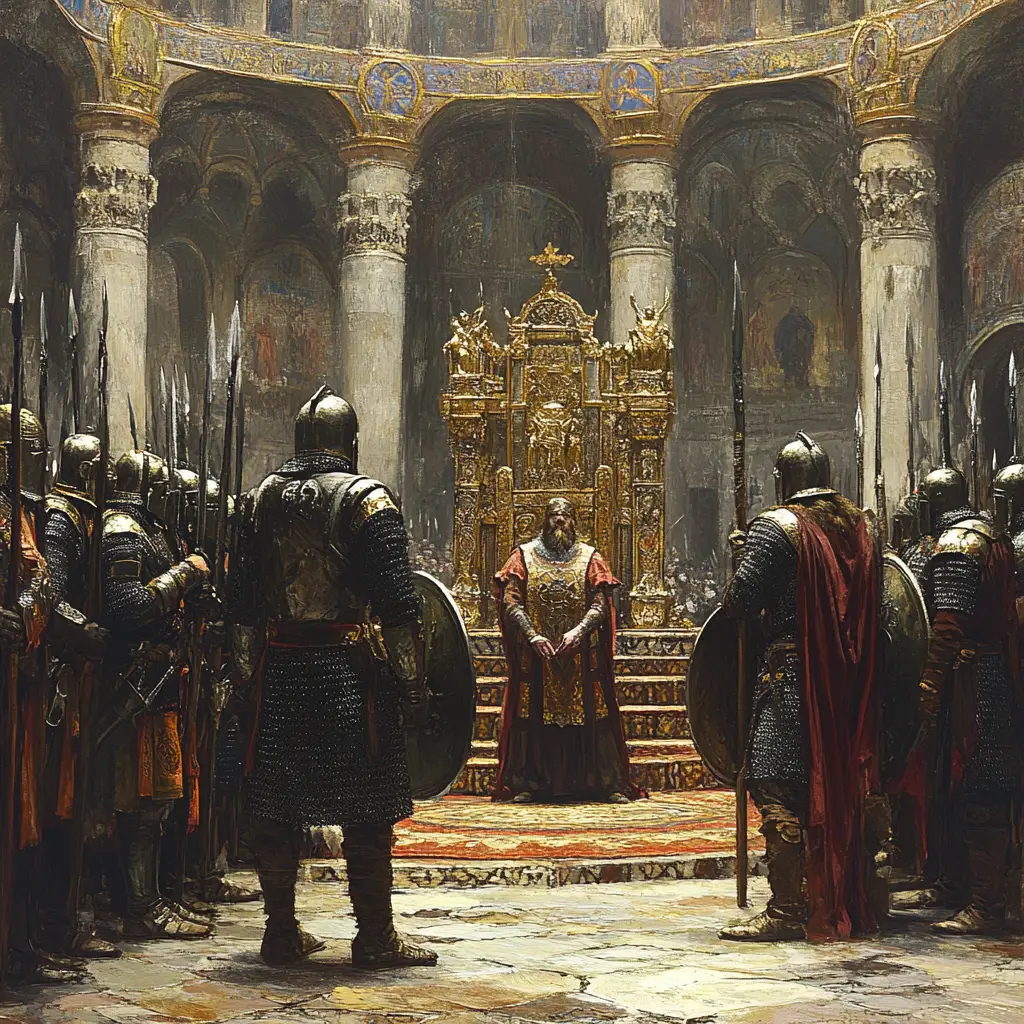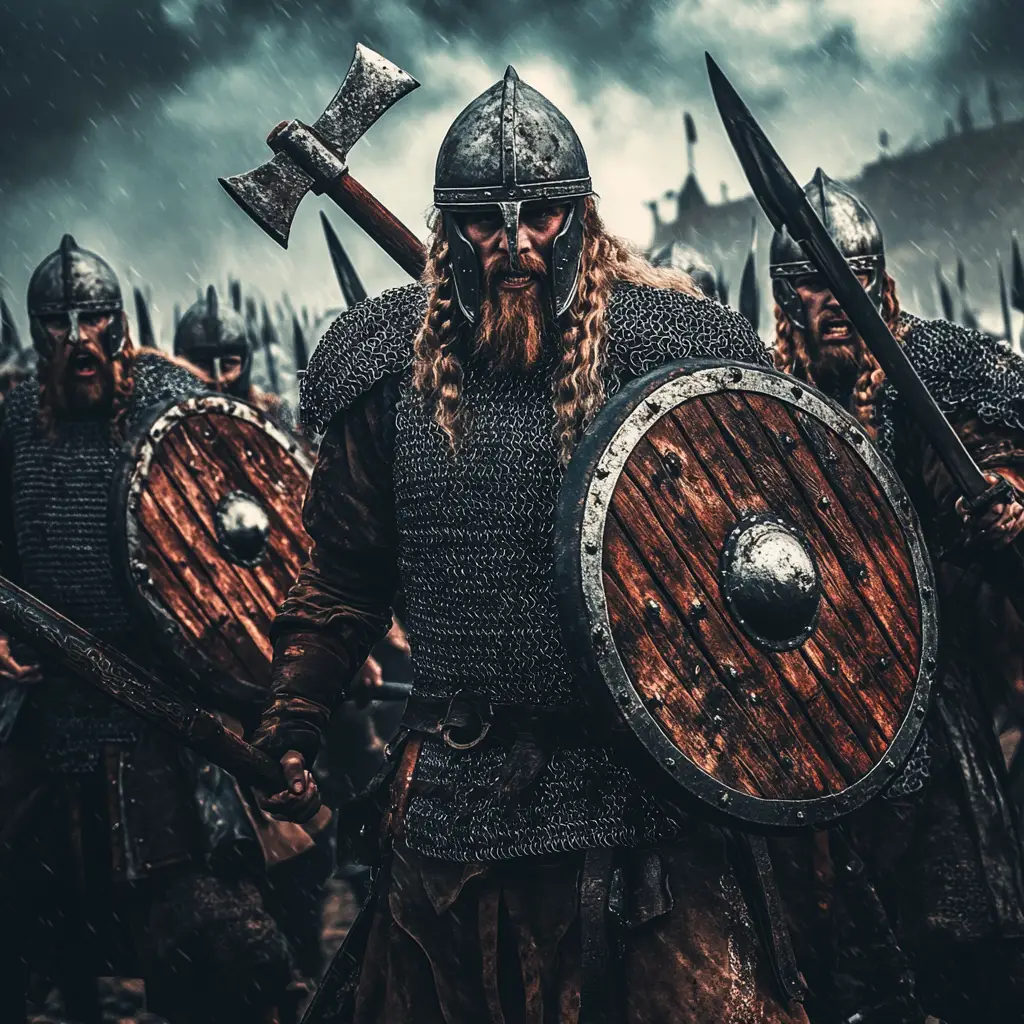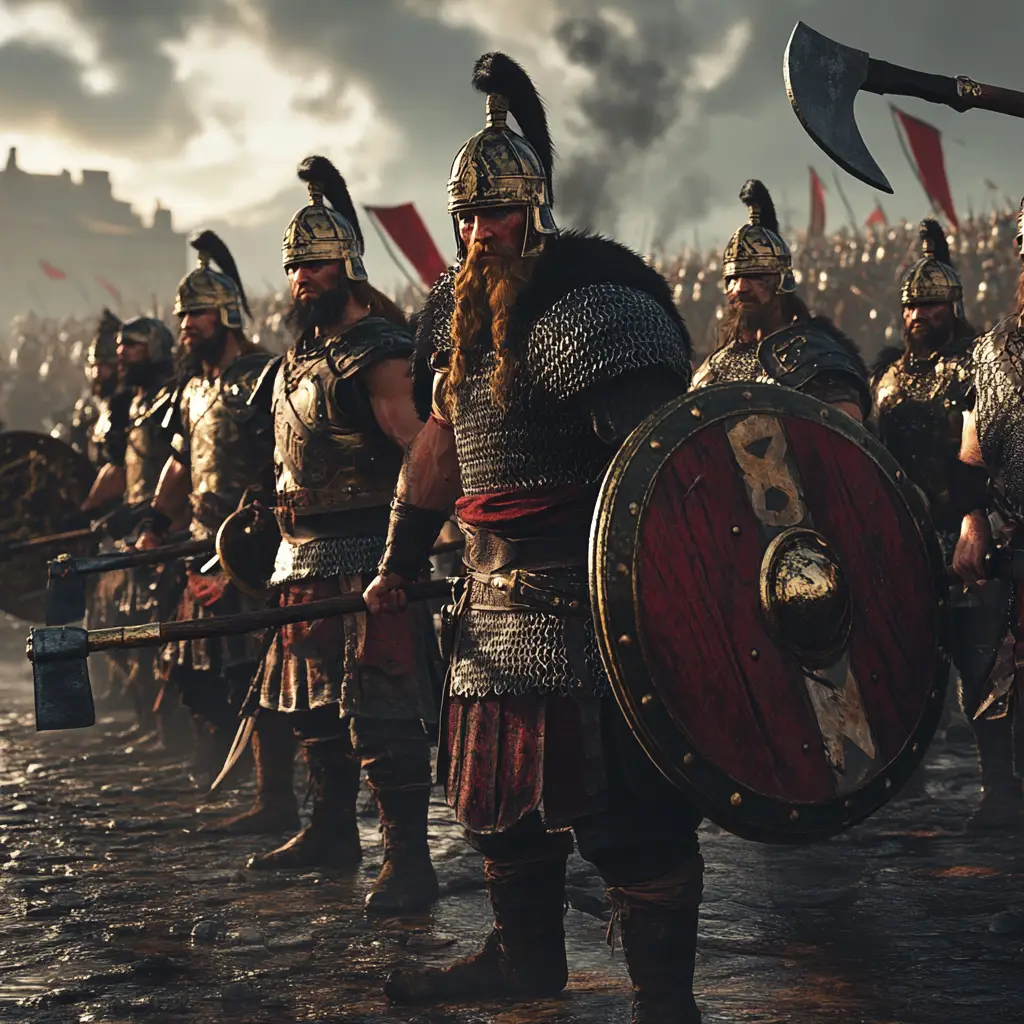The Varangian Guard was an elite unit of mercenaries that served as the personal bodyguard to the Byzantine emperors, primarily during the 10th to 14th centuries. The name “Varangian” comes from the Old Norse term várangr, meaning “sworn man” or “oath-man,” indicating that they were trusted warriors who swore loyalty to the Byzantine Emperor. Though they began as a group of mostly Norsemen, the Varangian Guard evolved over time to include people from different cultures, such as Slavs and Anglo-Saxons.
Origins and Viking Influence
The origins of the Varangian Guard are rooted in the Viking Age. In the 9th and 10th centuries, Norsemen—primarily from Scandinavia—had extensive contact with the Byzantine Empire, particularly through trade, raiding, and exploration. The Varangians were initially employed by the Byzantine Emperor Basil II in the early 11th century, who recognized their valor and fighting skills. The Varangians were known for their fierce loyalty, strength, and ruthless combat abilities, and they soon became an important force in the Byzantine military.
Role and Structure
The Varangian Guard’s main role was to serve as the emperor’s personal bodyguard and to provide protection in the emperor’s palace. They were often involved in important military campaigns and political intrigues, with their loyalty to the emperor being one of their most valued traits. They were famously known for their massive size, often coming from the northern regions of Europe, particularly Scandinavia, which contributed to their fearsome reputation.
Weaponry: The Varangians were primarily armed with large axes and swords, which they used effectively in battle. Their favorite weapon was the double-headed axe, which became synonymous with the Varangian Guard.
Tactics: While they were known for their strength in close combat, the Varangians often fought in a shield wall, a traditional Viking formation, and were very effective in the heavy infantry role.
The Varangian Guard in Battle
The Varangians were involved in several key military campaigns during their service in the Byzantine Empire. Their most notable actions were in the Balkans, Asia Minor, and the Mediterranean.
Basil II’s Wars: The most famous Varangian emperor was Basil II, known as the “Bulgar Slayer,” who employed the Varangians to fight in his wars against the Bulgarians. The Varangians were instrumental in his victory during the Battle of Kleidion in 1014, where they helped decisively defeat the Bulgarian forces.
The Crusades: During the time of the Crusades, the Varangian Guard was also involved in defending the Byzantine Empire against the growing threat of the Seljuk Turks and later the Ottoman Empire.
The Transition to Anglo-Saxon and Other Foreigners
Over time, the Varangian Guard became more diverse. In the 11th century, following the fall of Anglo-Saxon England after the Norman Conquest, many Anglo-Saxon nobles and warriors sought employment in the Byzantine Empire. The Battle of Hastings (1066) saw many defeated Anglo-Saxon soldiers join the Varangian Guard, bringing with them their traditions of combat and loyalty to the emperor.
Decline and Legacy
The Varangian Guard’s power and prominence began to decline during the late 13th and 14th centuries, as the Byzantine Empire weakened and fell into disarray. After the fall of Constantinople in 1453 to the Ottoman Turks, the Varangian Guard ceased to exist. However, the legacy of the Varangians lives on in the imagery of Viking warriors guarding an emperor, and their influence is still noted in both the military and cultural history of the Byzantine Empire.
Today, the Varangian Guard is celebrated in Viking and medieval history as a symbol of loyalty, warrior culture, and the complex interaction between the Viking world and the Byzantine Empire.



